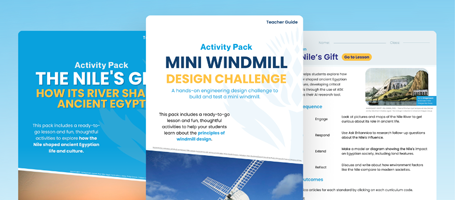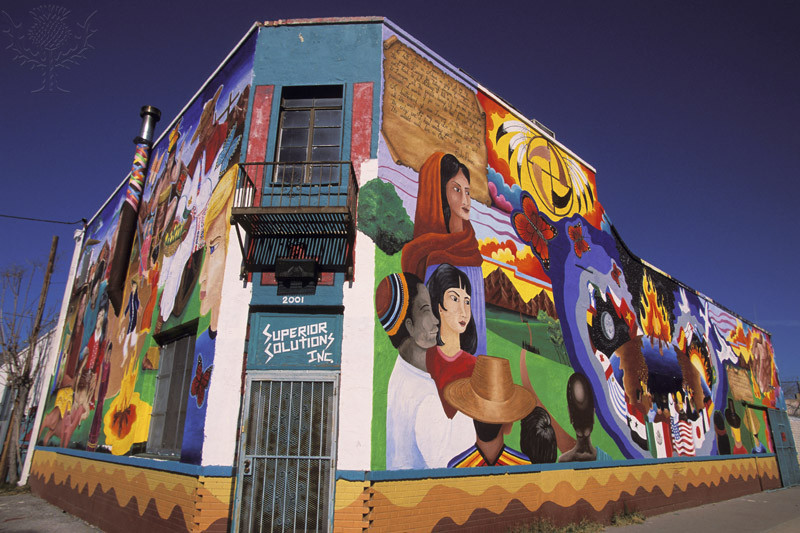In the current political and media climate, understanding the facts about multiculturalism is more important than ever.
Acknowledge and explore multiculturalism as a class with a bread-tasting, join the dots between arts and cultures and encourage your students to critically engage with media sources through an exploration of the immigration debate.
The following activities are designed for middle and high school students using resources from Britannica School and other online sources. Contact your librarian to find out if your institution already has access to Britannica School or claim your own free trial.
Unit Title
Multiculturalism
Year Level
7-10
Key Learning Areas
History; Social Studies / Humanities and Social Sciences
Assessment
- Various work samples based on tasks completed e.g. information report, art piece or family tree.
- Observation of students as they research and work through the task elements.
- Observation of discussions.
Resources:
- Internet access
- Device
- Samples of different types of bread
- Art supplies
Introduction:
Multiculturalism is the view that cultures, races, and ethnicities, particularly those of minority groups, deserve special acknowledgement of their differences within a dominant political culture.
Teaching Strategies / Learning Experiences:
The following resources and activity sets can be expanded into lesson plans, distributed as guided study resources or used to frame further group discussions. Supporting media can be displayed on an interactive whiteboard or projector to encourage collaboration in a classroom environment.
Activity: Take a Bite of Diversity
Many different cultures around the world serve bread as a staple food. The breaking of bread builds connection, breaks down barriers and often signify the start of community meals.
An accessible way for students to develop a tangible understanding of multiculturalism is by allowing them to see and even taste the variety of breads which are traditional to different cultures. Select from our list of suggestions below or go in with the lot! (Remember to be aware of dietary requirements and allergies within your class.)
| Country/Culture | Bread | Country/Culture | Bread |
|---|---|---|---|
| Armenia | Lavash | Italy | Pizza or Ciabatta |
| Australia | Damper | Japan | Sweet Bun (Anpan) |
| Australian Aboriginals | Bush Bread (Seedcakes) | Jewish | Matzo or Challah |
| Belgium | Waffle | Latin America | Sopapillas |
| China | Mantou | Mexico | Corn Tortillas |
| Egypt | Flatbread | New Zealand | Māori Sourdough Potato (Rewena) |
| France | Baguette or Brioche | Philippines | Pandesal |
| Germany | Pretzel | Poland | Bagel |
| Great Britain | Cob Loaf or Cottage Loaf | Spain | Tortilla |
| Greece | Pitas | United States | Corn Bread |
| India | Naan |
Discuss in class who eats these breads and the countries where they are most popular. Students use Britannica School to conduct research into one or more culture or country and present their information creatively.
In their research findings, students should include the following:
- An introduction to the Country or Culture
- Land and Climate
- Flora and Fauna
- Government
- Brief History
- People and Culture (including traditions and customs)
Activity: Culturally Diverse Art
Many cultures have different pieces of art or symbols that represent their beliefs and traditions. Develop an appreciation for the significance of various artistic symbols by investigating their meanings and origins. Extend the exercise by letting students recreate their own in class.
• Greek Heritage – Komboloi or Worry Beads
Traditionally used for relaxation and to remove worries and concerns.
• Mexican Culture – Tissue Flowers or Crepe Folding
Tissue or crepe flowers are used to decorate streets, houses and churches during festivals and holidays.
How to Make Mexican Tissue Flowers
• Chinese Heritage – Chinese Dragon
The Chinese Dragon is a symbol of good fortune, a dragon dance highlights Chinese New Year celebrations for many Chinese communities.
Design and illustrate a Chinese dragon dance costume.
• Japanese Heritage – Origami
Origami is the art of creating objects by folding a sheet of paper in precise steps. The created forms range from simple figures to complex designs complete with moving parts. Originally used for ceremonial purposes, origami today is a handicraft enjoyed worldwide.
How to Make an Origami Rhinoceros
• Australian Aboriginal Culture – Aboriginal Art
For thousands of years, Aboriginal people have created much art for spiritual, ritual and other purposes, including pleasure.
Examine the following Aboriginal paintings and create your own version:
Rock Painting: Australian Aboriginal Art
Australian Aboriginal Peoples
Aboriginal Art – ImageQuest Archive (subscription)
Activity: Create a Family Tree
Read the Britannica School articles on immigration and migration. Using their family history, students create a family tree. Students share their family tree with the class to help them appreciate that most of us have diverse backgrounds and personal links to other countries.
Activity: Immigration in Media
Use various media sources to collect recent news headlines about immigration. Were there any that portrayed a negative image? As a class, analyse the impact of these headlines on our attitudes towards diversity and multiculturalism. The following questions can be used to guide discussions:
- Are the headlines factual or based on opinion?
- What stereotypical images do they create?
- Are these images a true or fair representation?
Extension:
It is important to know and understand facts about immigration before making any judgement. Conduct a class debate around the topic: “Should our/other countries’ borders be open or closed to immigration?”
More Educator Resources
Sign up with your email for more free resources from Britannica.
Get full access to Britannica School any time, on any device with a school-wide subscription. Request a quick tour of the resource or get started free.

